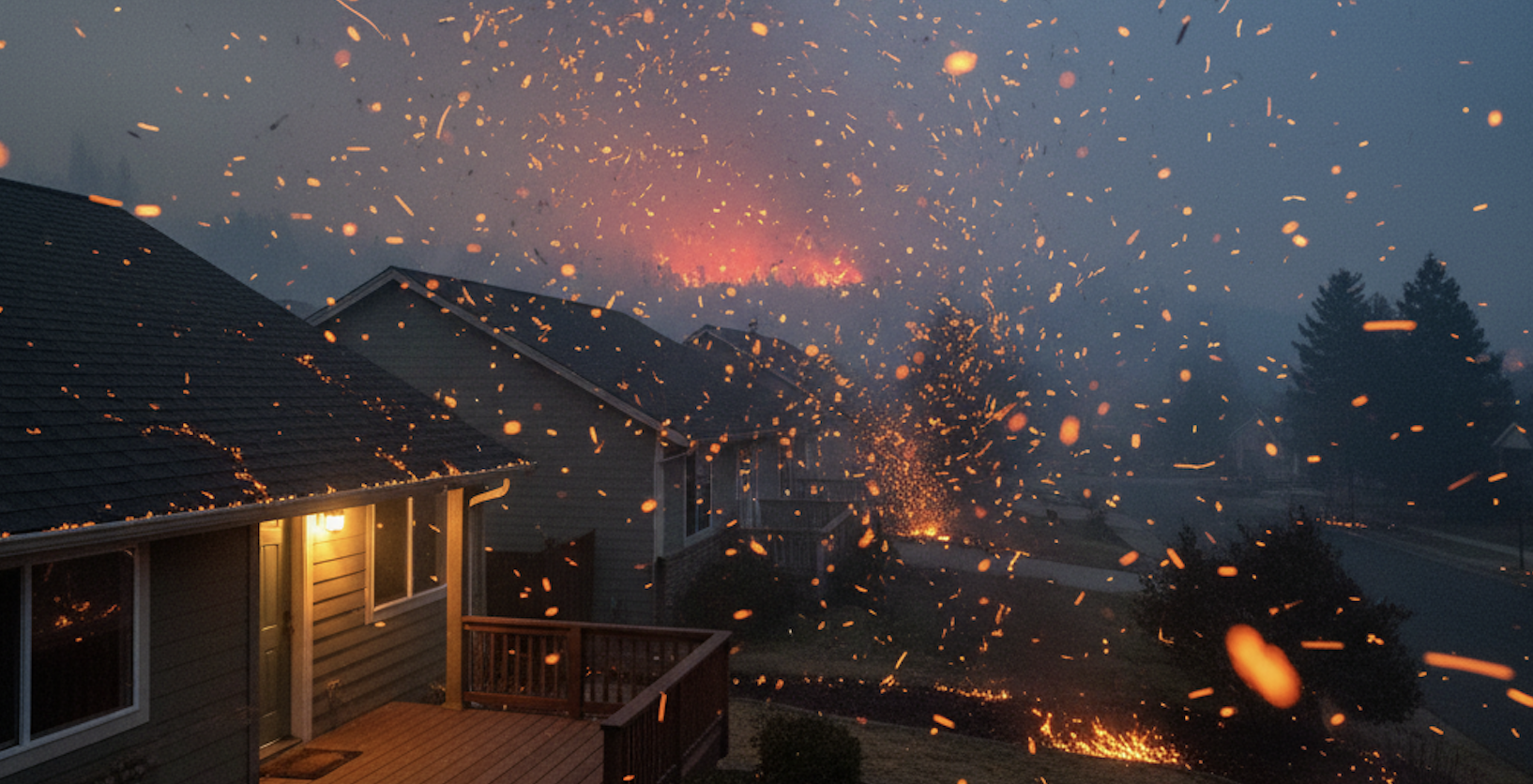We are living in the age of hydroclimate whiplash, where extremes of wetness create an overwhelming fuel load, and extremes of heat make that fuel critically dry. But when the inevitable wildfire finally arrives, the primary killer is often not the towering, wind-driven "wall of flames" that dominates headlines and homeowner fears. The truth, established by decades of post-fire investigation and laboratory research, is that a home's destruction is usually preceded by a far more insidious threat: the ember storm.
This fact represents the pivotal re-framing necessary for modern wildfire resilience. If you live in the Wildland-Urban Interface (WUI), you are not just preparing for a fire front; you are preparing for a massive, prolonged assault by millions of tiny, burning fragments.
The Invisible Assault: Embers as the Leading Cause of Home Loss
Embers, also referred to as firebrands, are small, combustible fragments of material, typically burning pieces of vegetation (such as leaves, twigs, or pine needles) or structural debris originating from other burning homes. These fragments possess the capacity to ignite other materials.
The data quantifying this threat is stark and conclusive: wind-blown embers are the leading cause of home ignitions in the WUI. In fact, as much as 90% of homes damaged or destroyed in WUI fires are first ignited by embers or by secondary fires started by embers.
Pushed by high winds, these firebrands turn into a weaponized force, forming a deluge of fire that blankets communities, a phenomenon often described as "red snow". These embers are highly mobile: they can be carried "more than a mile" from the main fire front, with some documented cases showing them traveling "as far as five miles". This mobility creates millions of "spot fires" far ahead of the main fire, exposing an entire community instantaneously, regardless of how far it is from the wildland perimeter.
How Embers Breach the Structure
The chaotic accumulation patterns of embers are influenced by the geometric characteristics of buildings, community density, and local wind patterns. However, research conducted by premier organizations like the National Institute of Standards and Technology (NIST) and the Insurance Institute for Business & Home Safety (IBHS) has pinpointed the critical vulnerabilities where these embers breach a structure's defenses:
Vulnerable Nooks and Crannies: Wind and fluid dynamics cause embers to accumulate in "nooks and crannies". This includes areas such as unprotected or debris-filled gutters, under decks, and behind exterior features.
Vents: The Hidden Pathway: If embers penetrate a vent—whether for an attic, crawlspace, or soffit—they can ignite insulation or stored debris inside the home. This allows the house to burn dangerously "from the inside out," often hidden from firefighters until it is too late. Vents are considered the most critical ember entry point for structures.
The Ground-to-Wall Intersection (Zone 0): Embers accumulate most critically at the ground-to-wall intersection, where the vertical wall meets the foundation. If combustible materials (such as wood mulch, dry leaves, or flammable plants) are present in the 0–5 Foot Noncombustible Zone (or Zone 0) immediately around the house, embers will ignite them, creating a flame source at the base of the wall. This localized flame can then shatter windows or ignite combustible siding, turning an ember problem into a direct flame problem.
Delayed Ignition: A crucial and often overlooked aspect of the ember threat is delayed ignition. Embers can be forced by wind into cracks, under decks, or into attic spaces, where they may smolder for hours after the main fire front has passed the community. A home that appears intact immediately following a fire event may still be completely lost hours later when this smoldering fire finally bursts into open flame.
The Scientific Mandate: Hardening is Non-Negotiable
This body of evidence leads to a singular, non-negotiable conclusion championed by leading research organizations: the widespread and unpredictable nature of ember showers means the exposure itself "cannot be eliminated or reliably reduced".
Therefore, the only viable mitigation strategy against the modern wildfire threat is to control the vulnerability of the structure. As NIST officially recommends, "All structures MUST be hardened for ember exposures". This mandates a foundational shift in how communities defend themselves, recognizing that a single, unmitigated vulnerability—be it an open vent or combustible mulch against the foundation—can, and often does, result in the total loss of the structure.
The next step in resilience is understanding precisely what constitutes this "hardening" and which components must be prioritized to withstand this chaotic ember assault.


